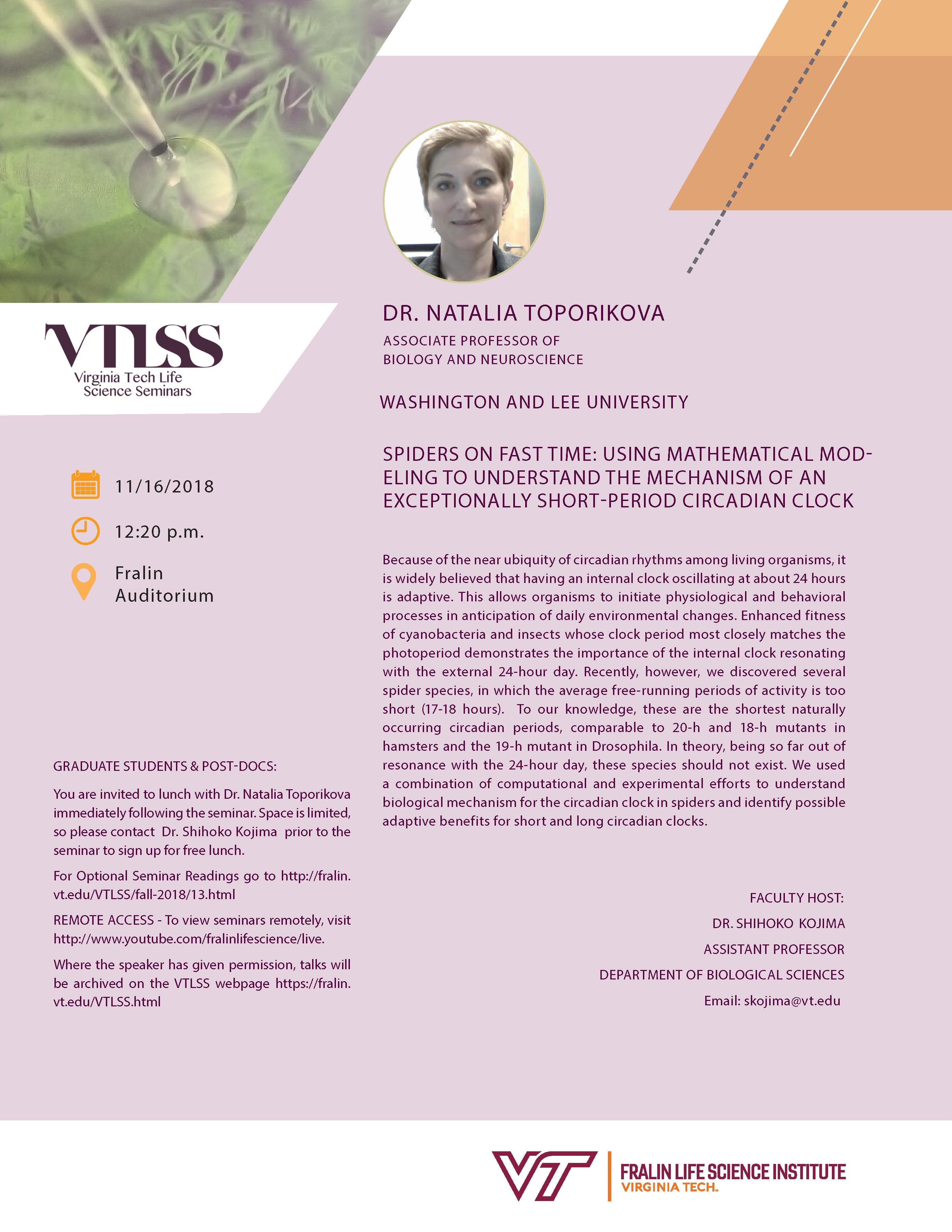Spiders on fast time: using mathematical modeling to understand the mechanism of an exceptionally short-period circadian clock

Dr. Natalia Toporikova; Washington and Lee University
November 16 at 12:20pm in the Fralin Auditorium, Fralin Hall room 102
Hosted by Shihoko Kojima
Natalia Toporikova is associate professor of Biology and Neuroscience in Washington and Lee University. She received a PhD in Mathematics from Florida State University and worked as a postdoctoral scientist at McGill University to understand electric fish signaling and in Georgia Institute of Technology to identify neural mechanism for control of breathing. Natalia’s research interests include Computational Neuroscience, Physiology and Endocrinology. She combines computational and experimental approaches to understand periodic physiological and neural processes. Her recent projects include changes in female reproductive hormones in response to a diet, neural mechanism of sighs and circadian clocks in spiders.
Because of the near ubiquity of circadian rhythms among living organisms, it is widely believed that having an internal clock oscillating at about 24 hours is adaptive. This allows organisms to initiate physiological and behavioral processes in anticipation of daily environmental changes. Enhanced fitness of cyanobacteria and insects whose clock period most closely matches the photoperiod demonstrates the importance of the internal clock resonating with the external 24-hour day. Recently, however, we discovered several spider species, in which the average free-running periods of activity is too short (17-18 hours). To our knowledge, these are the shortest naturally occurring circadian periods, comparable to 20-h and 18-h mutants in hamsters and the 19-h mutant in Drosophila. In theory, being so far out of resonance with the 24-hour day, these species should not exist. We used combination of computational and experimental efforts to understand biological mechanism for circadian clock in spiders and identify possible adaptive benefits for short and long circadian clocks.
Moore, D., Watts, J. C., Herrig, A., & Jones, T. C. (2016). Exceptionally short-period circadian clock in Cyclosa turbinata: regulation of locomotor and web-building behavior in an orb-weaving spider. Journal of ARACHNOLOGY, 388-396.

This seminar will be livestreamed and archived on the Fralin YouTube channel.


